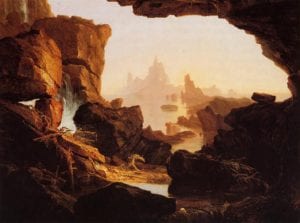
An Old Testament KnoWhy for Gospel Doctrine Lesson 6: “Noah … Prepared an Ark to the Saving of His House” (Moses 8:19-30; Genesis 6-9; 11:1-9) (JBOTL06B)
Question: In Genesis 6:9, Noah is described as “a just man and perfect in his generations,” a noble patriarch who, like Enoch, “walked with God.” However, the story of Noah finishes in a puzzling way. Immediately after Noah makes his covenant with God, his sons find him “drunken” and “uncovered within his tent.” Can these two opposing pictures of Noah be reconciled?
Summary: It is difficult to know whether this contradiction is the result of different traditions, textual misunderstanding, or the abbreviated nature of the biblical account. Some scholars even wonder whether there was a deliberate effort to defame or belittle the character of Noah. What seems certain is that the biblical author deliberately framed this sequel to Noah’s Creation and Garden story as a replay of the scene of the Adam and Eve’s Fall and consequent judgment in Eden. Most often the instigator of this “Fall” is seen to be Noah, who, it is reported, succumbed to the intoxicating influence of wine from his vineyard. However, it is significant that the scriptures omit any hint of wrongdoing by Noah and put all the blame on Ham and his son Canaan. In the admittedly tentative interpretation given in this article, I will discuss the possibility that Ham’s wrongdoing consisted in his having approached, without authorization, the inner curtains of the sacred tent where Noah was enwrapped in vision. Some ancient traditions viewed Ham’s actions as part of an effort to steal Noah’s priesthood garment and undermine his authority.
The full article may be found at the Interpreter Foundation website: KnoWhy OTL06B — Was Noah Drunk or in a Vision?
As a video supplement to this lesson with additional details and artwork not included in this article, see Jeffrey M. Bradshaw, “The Ark and the Tent: Temple Symbolism in the Story of Noah” on the YouTube Interpreter Foundation channel (https://www.youtube.com/watch?v=kIfArfB54Mk ).

